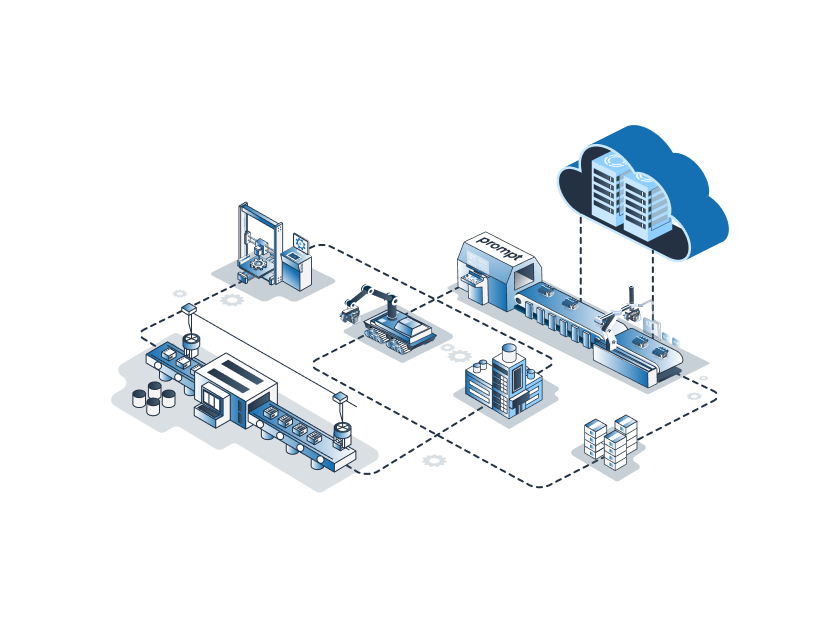Internet of Things is one of the booming technology that has occupied an important place in the industrial sector and has become part of other futuristic development plans. Today, if you observe your surroundings, you might realize that things are updating and becoming smart. The real-time data shared by the equipment involved in this innovative technology has revolutionized every industry. The real-time data offered are ideal for encountering the challenges of service providers, either its restaurants to automotive shops, or it is a pet grooming shop.
The topmost issue among other challenges is the growing expectations of the customers. Today customers are looking for fast and consistent service. As per the recent survey conducted, approximately 70 per cent of respondents opted for fast shipping as a decisive factor for online purchases. Now, here fast means immediate, with the same-day delivery market to increase at a rate of over 20 per cent through 2027. However, the expectation of customers is not just limited to e-commerce. Suppose the service provider fails in meeting the timeline of a client. In that case, they will switch to someone else- may be to somewhere that’s already embracing IoT solutions for a better customer experience. IoT offers a plethora of options that can address service challenges, including predictive maintenance, asset tracking, and advanced process automation. But the most significant benefit that IoT drags into service industries come from one capability: service tracking.
Service Tracking with IoT Solutions:
Service tracking itself defines its meaning, i.e. real-time monitoring of the progress of a task; it can be anything, whether haircut or machine maintenance. An IoT solution empowers you with this visibility automatically. Here’s how IoT services can help in tracking works:
- Multi low-cost sensors keep a watch on the ongoing task and monitors progress indicators. These are the assets of IoT, sensors implanted in equipment or posted at a distance, like cameras or RF devices. They are known as edge devices, and they accumulate data at the point of work.
- Internet connectivity sends the data. Edge devices gather processed data but to share the same, they require wireless connectivity. It can be a dedicated narrowband IoT network or 5G network, or even Bluetooth.
- A cloud-based data managing platform: Observational data stocks into a centralized platform on the cloud. Over there, it is converted into meaningful insight. For instance, if you run an oil change service, cameras installed in your workplace can send a video to the data platform, where software identifies a car rolling out of the bay. This indicates that an oil change process is completed.
- Front-end software application offers human touchpoints. The final stage of IoT service tracking is sharing data with stakeholders. We can say that it means a branded app that updates your customers with real-time estimates—for example, informing customers that your car will be ready to take in 10 minutes. It can also include a reporting dashboard that helps you point process improvements.
We all know that every IoT Implementation is unique, and this is just like a small picture. It may surprise you that service providers need to pay attention to IoT as it provides extraordinary advantages for service companies.
How is IoT Service Tracking changing the outlook of Service Providers and their Customers?
Service tracking with IoT solutions charters a path to unlimited benefits. Ones who are already embracing IoT in service industries are enjoying the results. Lets us know how IoT service tracking is changing the vision of service industries:
- Reduced wait times: When tracking your services can be done digitally, and precisely then entire scheduling operation becomes much less wasteful. You skip the best-guess estimates. You are aware of current processes and when the next guest room will be available because the system tracks the ongoing housekeeping processes. An automated system informs the customer about the availability of the room, mentioning the exact time. This type of predictive wait time eliminates frustration and improves customer service.
- The involvement of an IoT service tracker ensures better operational efficiency. Service tracking saves customers time along with yours. With more efficient scheduling created using IoT solutions, you can see more clients and improve efficiency and profitability. Process data also shares the bottlenecks for workflow optimization. Above all, this allows you to improve productivity, leading to lower prices and providing a sharper competitive edge.
- The inclusion of an IoT service tracker creates an excellent customer experience. The addition of IoT brings terrific customer experience, which is the key to growth in the service industry. Line-free service, progress updates and cost-saving without negating the quality allures customers to come back again.
No doubt, service tracking is just not a way through which IoT benefits service providers. IoT provides other services like asset tracking for goods and equipment. Sensors installed in core equipment can track the uses to establish a more accurate preventative maintenance. They can even share data with machine learning models to facilitate predictive maintenance.
IoT is one of the fast-growing technology, so there is more on the horizon. It holds everything that can improve services, draw benefits and save time.
















